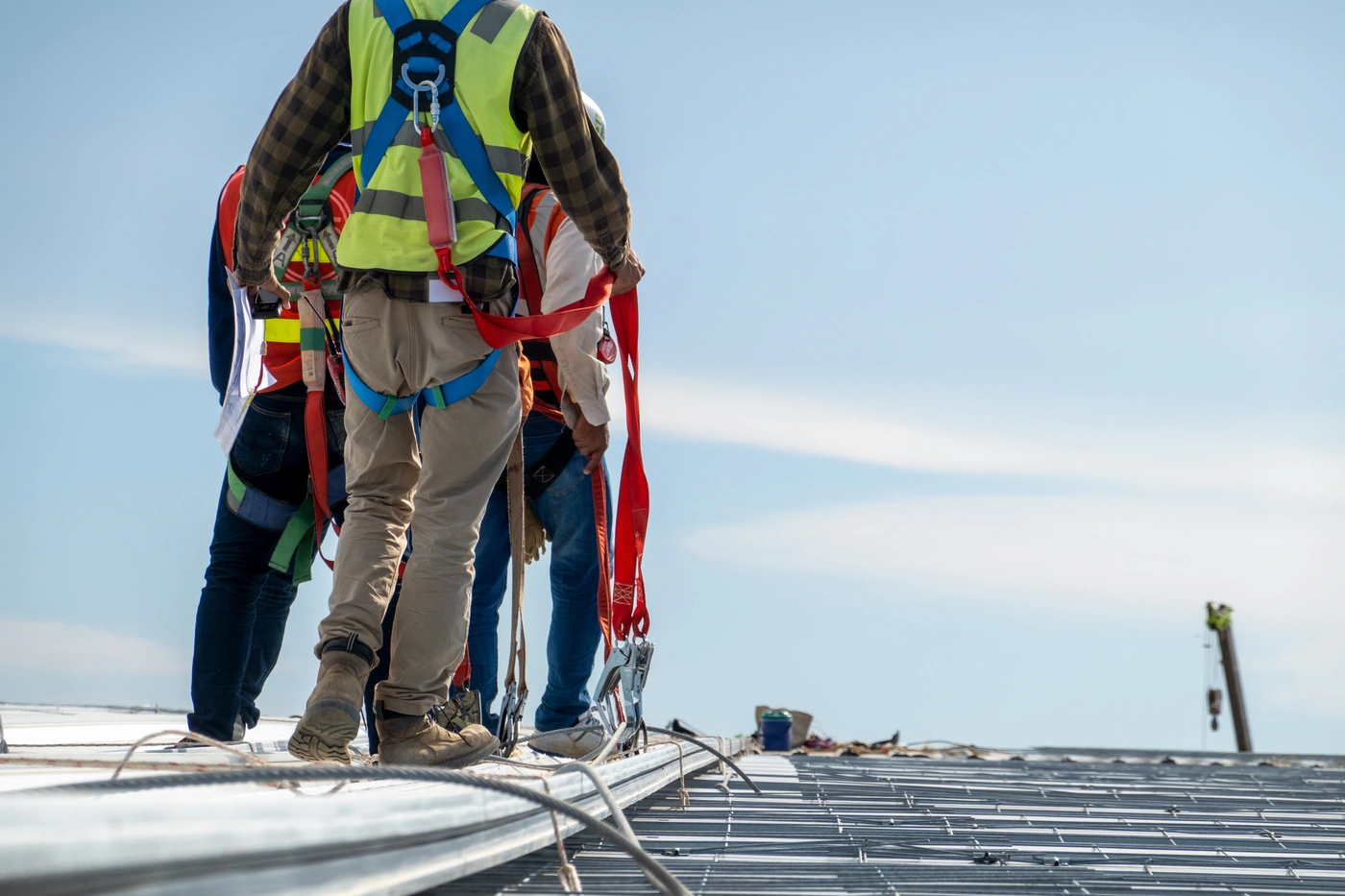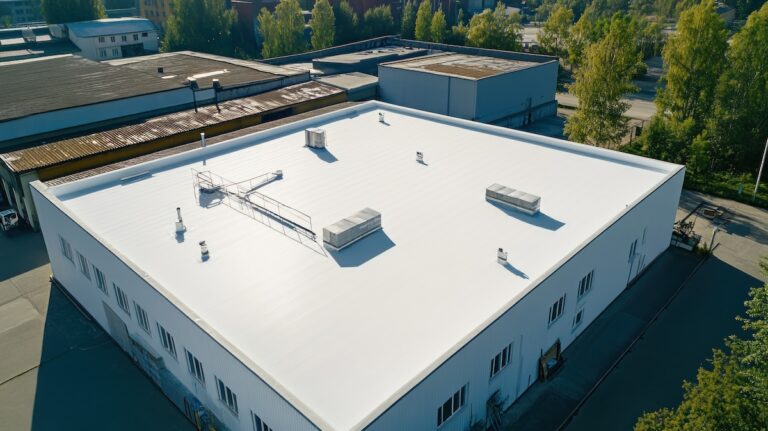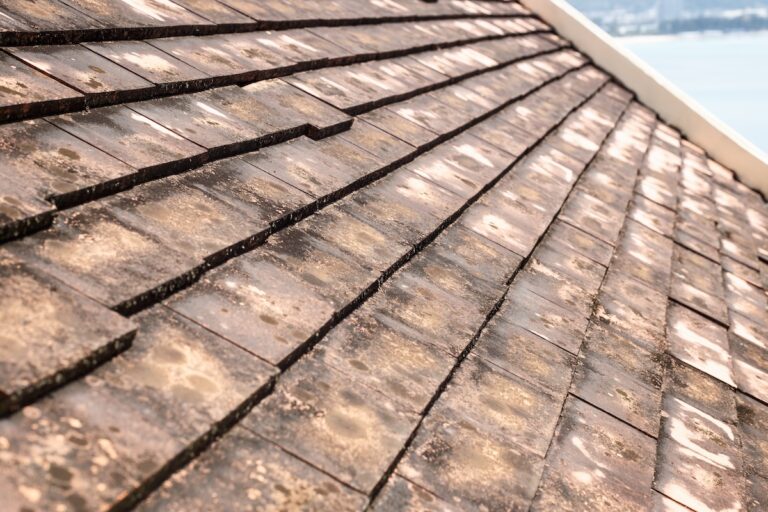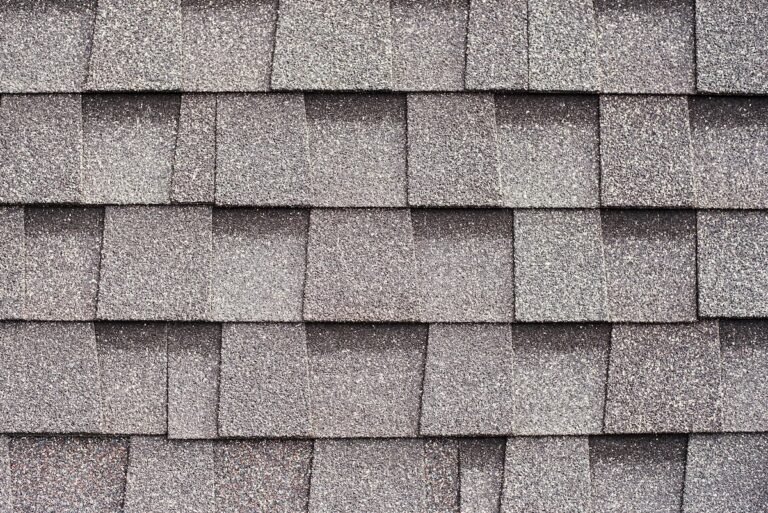When it comes to maintaining your building, a commercial roof inspection checklist is one of the smartest tools at your disposal. Regular inspections can catch small problems before they turn into major disruptions—protecting your property, your budget, and your tenants.
In this blog, we’ll walk through a straightforward checklist designed for commercial property owners who want to:
- Avoid costly repairs and emergency downtime
- Protect valuable assets inside the building
- Extend the life of their roofing system with regular maintenance
Let’s break down the steps to keep your commercial roof in peak condition.
❗️ Why Commercial Roof Inspections Matter
Your commercial roof is constantly exposed to weather, temperature fluctuations, foot traffic, and equipment. Unlike residential roofs, commercial roofs often support HVAC systems and other penetrations, making them more prone to wear.
- Preventative savings: Spotting issues early reduces the need for major repair or premature replacement.
- Liability protection: A well-maintained roof protects inventory, equipment, and the people inside.
- Insurance advantages: Documentation from regular inspections helps validate insurance claims in the event of storm or hail damage.
Following a set inspection routine not only helps preserve your building, it also gives you peace of mind.
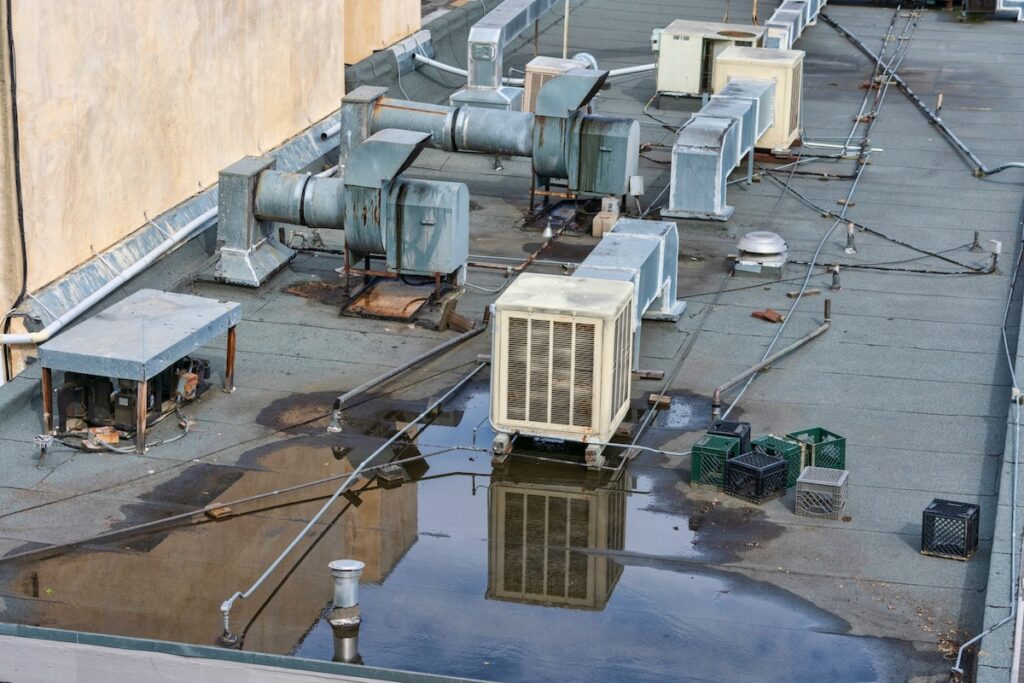
🔍When to Inspect Your Commercial Roof
At minimum, you should inspect your roof twice a year and after any severe weather event.
- Spring and fall: These seasonal checkpoints help you prepare for summer heat and winter ice.
- Post-storm inspections: Wind, hail, or heavy rain can compromise roof membranes and flashing.
- Before and after major construction: Additional rooftop traffic can create new vulnerabilities.
Partnering with a roofing contractor ensures nothing is missed—especially in areas that aren’t easy to access.
✅ 7-Step Commercial Roof Inspection Checklist
Use this checklist as a repeatable routine to catch signs of wear, damage, or aging before they become bigger problems.
- Check Roof Membranes for Tears or Bubbles: Look for cracks, blisters, or punctures in the membrane material. These areas can lead to water infiltration and damage to the underlying roof deck.
- Inspect Roof Penetrations and Flashing: Vents, skylights, HVAC units, and other penetrations should be sealed tight. Loose flashing or deteriorated sealant is a common source of leaks.
- Clear Debris From the Roof Surface: Leaves, sticks, or gravel buildup can block drainage and retain moisture—eventually causing rot or mold.
- Evaluate Drainage and Gutters: Make sure drains, scuppers, and downspouts are clear. Standing water is a major red flag and can lead to structural damage over time.
- Check for Signs of Ponding Water: Flat roofs should never have large puddles after 48 hours. Poor drainage can compromise the integrity of roof membranes and increase the risk of leaks.
- Look for Cracks or Gaps Along the Roof Perimeter: Edges are especially vulnerable to uplift during high winds. Inspect for gaps or loosened components that could affect the entire roofing system.
- Take Photos and Keep Records: Visual documentation helps you track changes over time and is critical if you need to file an insurance claim or warranty request.
This simple checklist can be performed in-house or with the help of a professional roofer. Either way, consistency is key.
⛈️ What to Watch for After Severe Weather
Even well-maintained commercial roofs can suffer unexpected damage from extreme conditions. After a storm, add these steps to your inspection process:
- Look for membrane tears or lifted seams: Wind and hail can rip or puncture single-ply membranes.
- Check for dented or dislodged flashing: Especially around rooftop equipment and edge terminations.
- Inspect for debris-related damage: Tree limbs or loose objects can gouge or scrape the surface.
- Watch for ice dams in winter: On low-slope roofs, ice buildup can block drainage and force water beneath the membrane.
If you spot any signs of damage, contact a local roofing contractor right away to assess the situation and prevent further issues.
📋 Include These Items in Your Roof Maintenance Checklist
Beyond inspections, a proactive roof maintenance checklist can help preserve your investment and avoid business disruptions.
- Schedule semi-annual professional inspections: Have a roofing company check areas you can’t easily access.
- Clean roof drains regularly: Prevent ponding and backup.
- Trim overhanging trees: Limit falling debris and reduce the risk of punctures.
- Seal new roof penetrations: Anytime you add equipment, ensure it’s properly waterproofed.
- Check for UV degradation: Faded or brittle materials indicate exposure-related wear.
A well-maintained commercial roofing system can last decades with proper care.
⚠️ Signs You Need Professional Repairs or Replacement
Not every issue means you need a new roof, but some signs should trigger a call to a trusted roofing contractor.
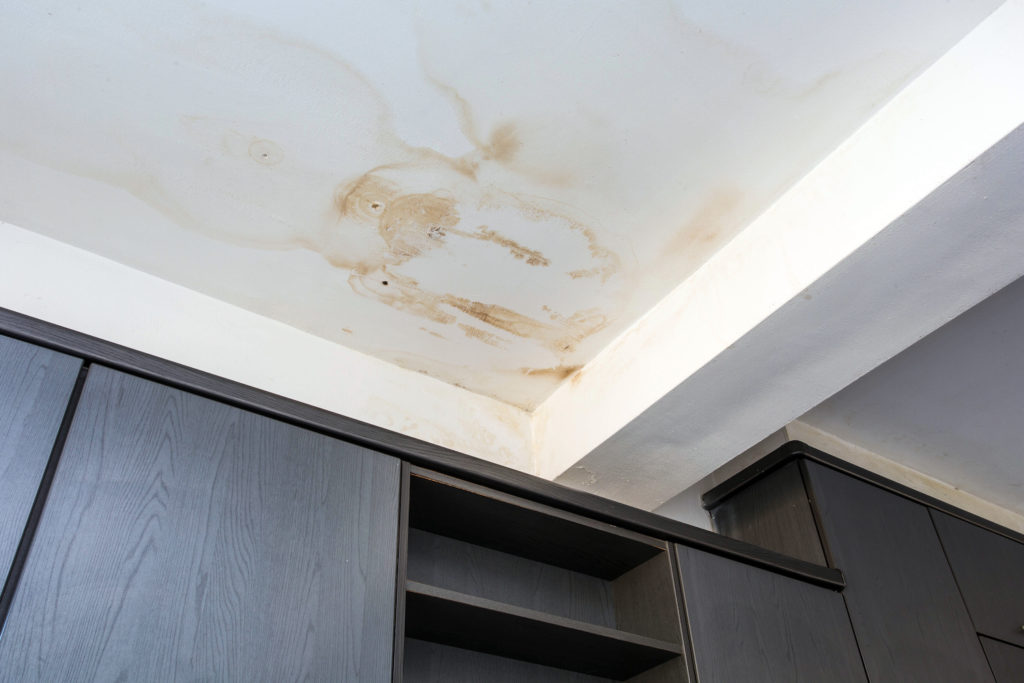
Persistent Leaks or Water Stains
Repeated leaks, especially after multiple repairs, can indicate deeper damage to the roof deck or underlayment.
- What to do: Have a full inspection to determine whether spot repairs are still viable or if a larger repair or replacement is needed.
Visible Damage to Roof Membranes
Wrinkling, splitting, or shrinking of the membrane material is a common sign of aging or poor installation.
- What to do: A roofing company can identify whether sections can be patched or if re-roofing is required.
Mold or Interior Moisture Problems
Moisture intrusion from small leaks can lead to mold, rot, and unhealthy indoor air quality—especially in drop ceilings or ductwork.
- What to do: Address both the leak and any compromised insulation or materials inside the building.
If you’re unsure, a good roofing company will walk you through options that fit your budget and long-term goals.
🤝 Work With a Roofing Contractor You Can Trust
Your roof is too important to leave to guesswork. Whether you manage a retail space, warehouse, office building, or multi-tenant facility, having a commercial roofing partner you trust is critical.
- Look for proven experience: Choose a roofing contractor that specializes in commercial roofs—not just residential work.
- Verify certifications and insurance: This protects you from liability and ensures quality materials are used.
- Get everything in writing: Scope of work, timelines, and warranty coverage should all be clear upfront.
At G. Cannon, we specialize in commercial roof inspections, repairs, and replacements as we specialize in Pennsylvania roofing. We help building owners stay proactive—without surprises or pressure.
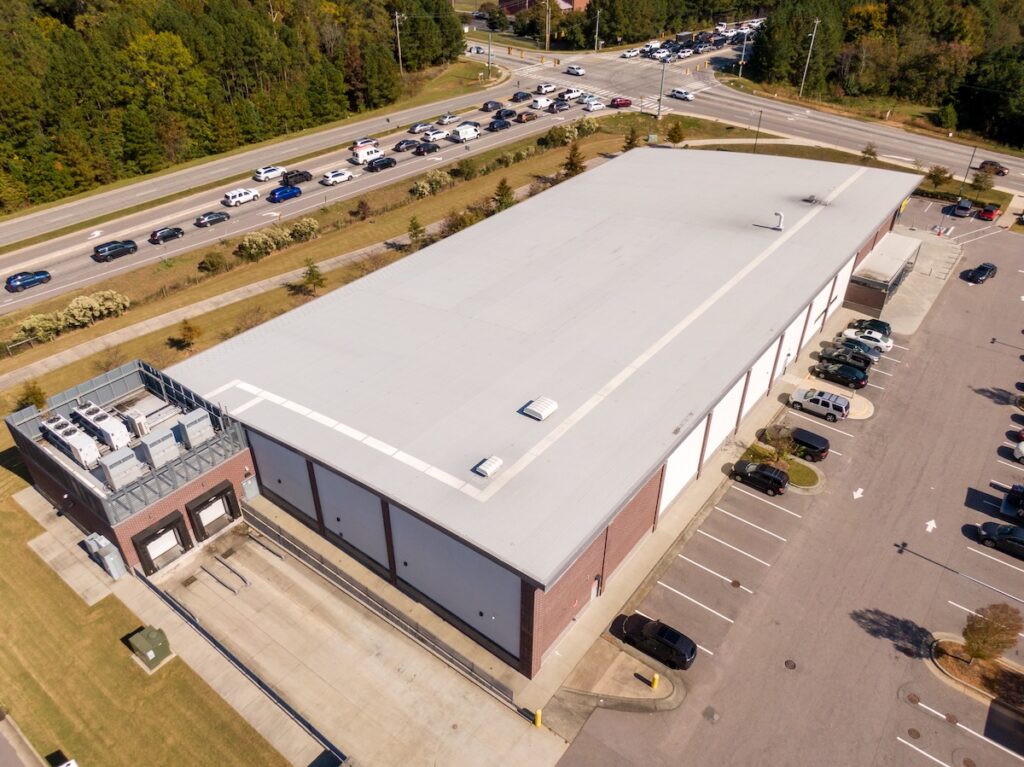
👍 Stay Ahead With G. Cannon’s Expert Commercial Roof Inspections
Following a commercial roof inspection checklist helps you protect your property, your tenants, and your budget. Regular evaluations can extend the life of your roofing system, minimize costly repairs, and keep your business operations running smoothly.
If you’re due for a routine inspection or recovering from storm damage, G. Cannon is here to help. Our experienced team will provide a detailed evaluation, honest recommendations, and expert repairs if needed. Contact G. Cannon today to receive a free estimate and keep your property protected year-round.
